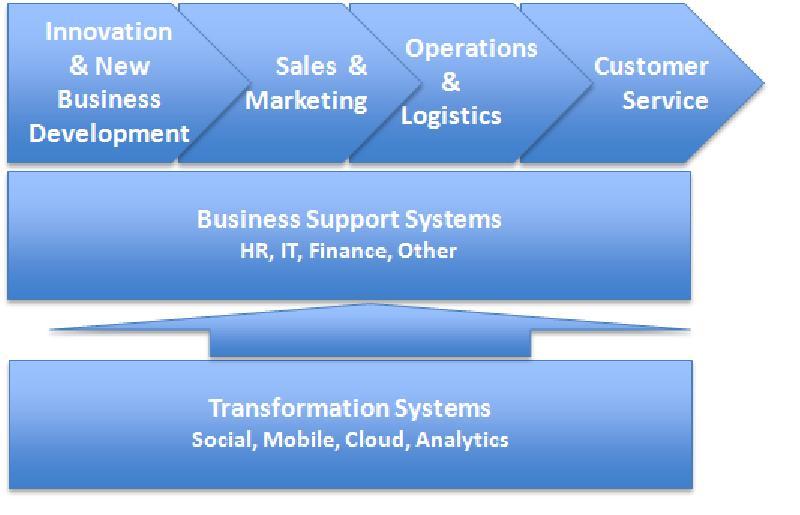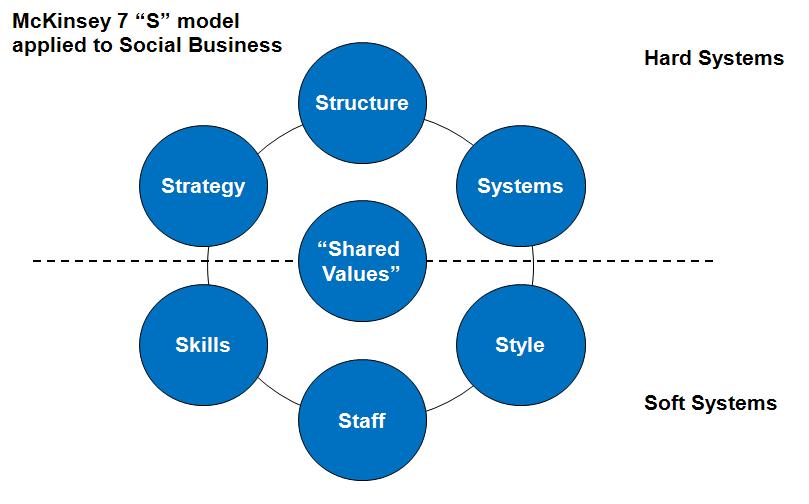A High Level Diagnostic for the Digital Transformation
The Diagnostic Model
Our high level diagnostic model is broadly based on Porter’s standard Value Chain model, but we have adapted it for a Digital Transformation environment. It is shown in the Diagram below.
It considers the core business functions in the end to end value chain:
- Product Innovation and Development
- Sales & Marketing
- Operations & Logistics
- Customer Service
- Business Support Functions (HR, Recruitment, IT, Finance and others)
We then look at the Transformation technologies and systems and how they work to identify where the highest potential opportunities are, where the gaps are, and how value is best created.
End to End Digital Transformation Model
Defining a Digital Transformation Strategy
For a Digital Transformation strategy, the key questions for each area that we run through are:
- What, and where are the key value drivers in each of these areas
- How do the Digital Transformation tools & techniques drive value in each area (for the purpose of our workshops we focus on the SMAC stack – Social, Mobile, Analytics, Cloud)
- What (if any) higher level business drivers need to be considered in defining what are the highest value outcomes required from these systems
- Engagement – what will be the expected impact of high or low engagement in each area
- Which tools & techniques are most appropriate given the above analysis
- What other “Hard” systems (e.g. structure of organisation, measures) need to be considered
- What “Soft Systems” will be important in terms of skills, types of staffing and the “style” of the business (this latter includes metrics, reward systems, culture and other factors)
It is not a strict structure, and depending on the environment we can add other areas and drop un-required areas – it is more a structure to ensure that what emerges is a holistic, end to end solution that surfaces most issues and is systemic in its nature, ie the flows and influences are understtod.
The Value analysis approach we use is a high level approach that gives a fast analysis of where there is potential value in each area, and which tools are best able to drive that
Designing the Transformation
We use a derivation of the well tried McKinsey 7S model to design the Transformation. The benefit of this model is it forces the enterprise to consider not just look at the technologies and “hard” systems, but also the “Softy” systems – people, skills, and culture – which experience shows are essential for any transformation to succeed.
The hub of any Transformation is the derivation and communication of the shared values of the transformed enterprise – a “manifesto for change” so everyone knows the direction of travel, the reasons, and what the benefits to them are.

